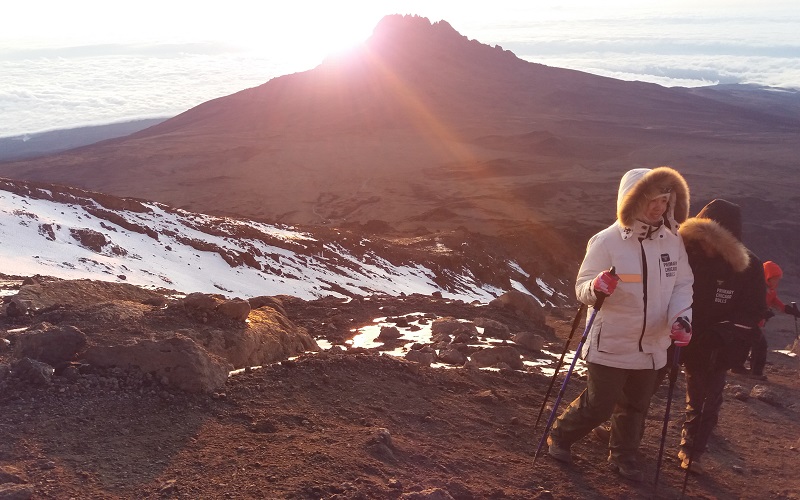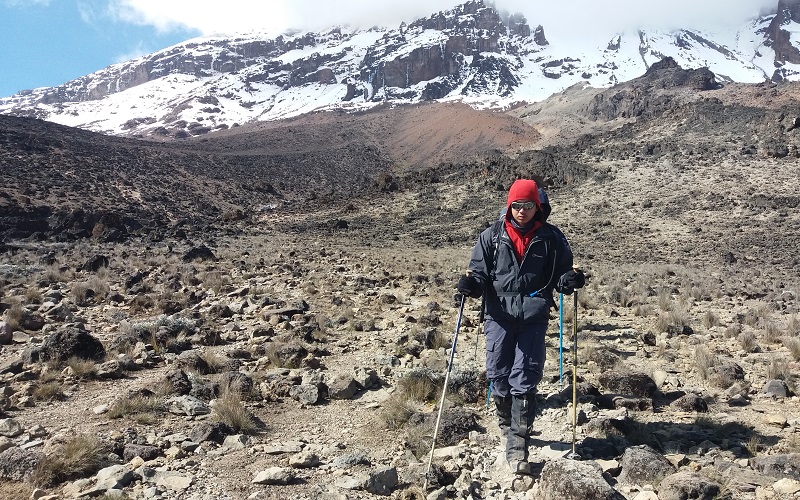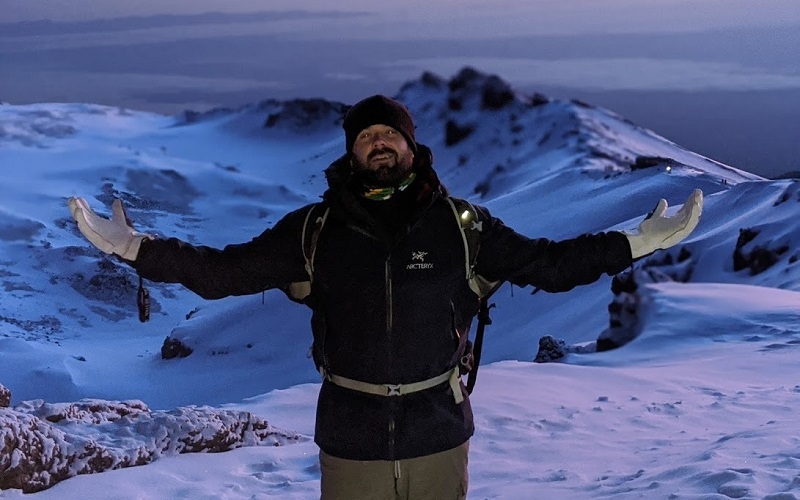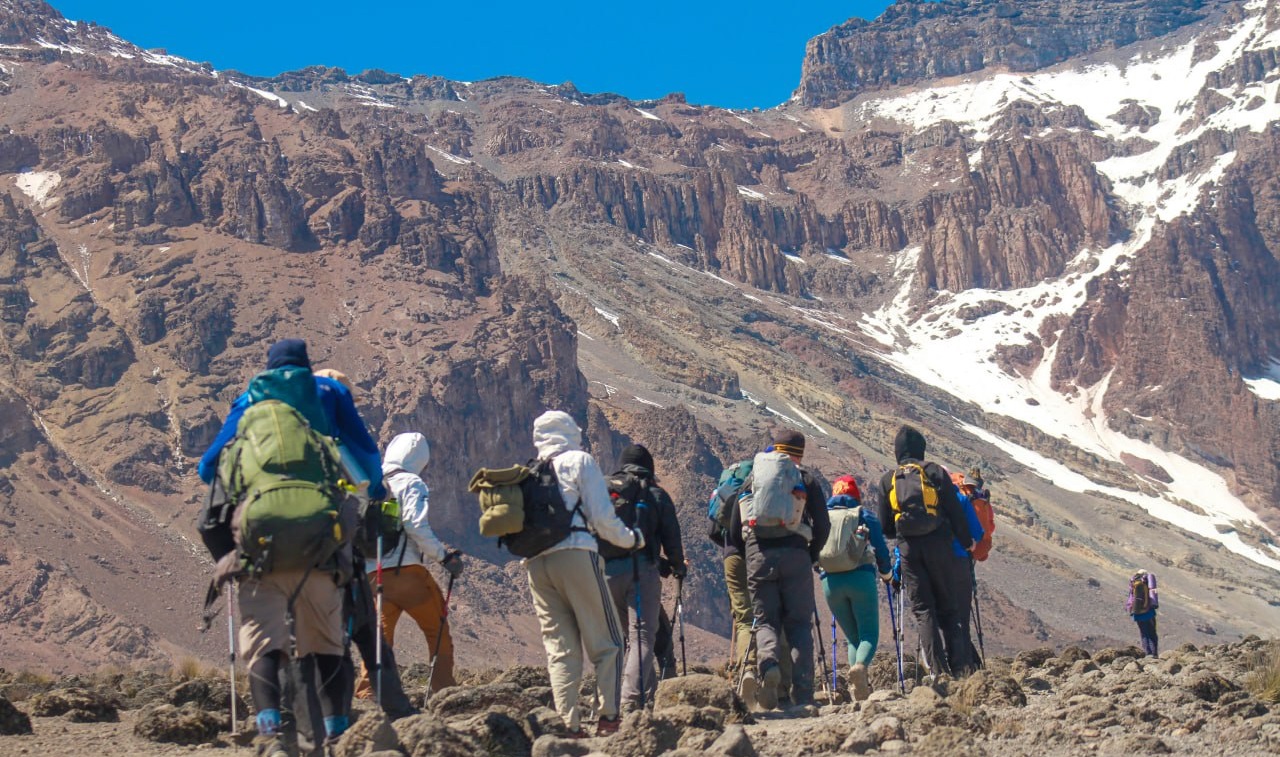
Mountain Sickness & Control on Kilimanjaro
Altitude Sickness (also known as Acute Mountain Sickness or AMS) is a medical condition caused by exposure to low air pressure, especially the reduced oxygen levels at higher altitudes. It is common among climbers at altitudes above 2400 meters (approximately 8,000 feet), and the summit of Mount Kilimanjaro stands at nearly 6000 meters (19,341 feet). AMS can be debilitating and poses serious risks to your health, particularly since it occurs at high altitudes where immediate medical treatment is difficult to obtain. Understanding AMS, its symptoms, and how to manage and avoid it is crucial for a safe and successful Kilimanjaro ascent.
What is Altitude Sickness (AMS)?
Altitude sickness occurs when the body struggles to adapt to the lower oxygen levels and decreased atmospheric pressure at high elevations.
At Sea Level: You breathe air that has more oxygen, making it easier for your body to function.
At Kilimanjaro’s Summit: The air pressure (and oxygen levels) is less than half of what it is at sea level, making even simple activities harder. Many climbers describe the feeling as if they’re "working with only one lung."
AMS can range from mild symptoms (headache, dizziness, fatigue) to severe complications (cerebral or pulmonary edema), so it's vital to understand how to prevent it and recognize the early warning signs.
Why Do Some Climbers Get AMS and Others Don’t?
AMS can affect anyone, regardless of their fitness level. However, certain factors increase your risk:
Physical Condition: A fitter person may cope with the low pressure better than an unfit person because their cardiovascular system is more efficient at handling the strain of altitude.
Acclimatization: The lack of proper acclimatization is one of the main causes of AMS. If your body has not had time to adapt to the lower oxygen levels, it becomes more susceptible.
Rapid Ascents: Climbing too quickly without giving your body time to adjust increases the risk of AMS.
Even fit and experienced climbers can be affected if they ascend too rapidly without adequate rest for acclimatization.
How to Avoid AMS
Walk High, Sleep Low: This means you should climb to a higher altitude during the day but descend to a lower altitude to sleep at night. This helps your body adjust gradually to the thinner air.
Take It Slow and Steady: Avoid exerting yourself too much. Keep a comfortable pace and monitor your breathing. If you find yourself gasping for air or out of breath, slow down immediately.
Stay Hydrated: Drink at least 3 liters of water per day. Dehydration mimics the symptoms of AMS, so staying hydrated can help prevent both dehydration and altitude sickness.
Diamox: This medication can help reduce the risk of AMS. It is commonly used by climbers on Kilimanjaro. Before taking Diamox, consult your doctor to discuss any potential side effects or contraindications.
Effects of Exposure to Low Atmospheric Pressure
At high altitudes, the reduced oxygen levels have specific effects on the body:Low Oxygen Saturation (Hypoxia):
With each breath at high altitude, less oxygen enters your lungs and bloodstream. This leads to fatigue and breathlessness. Severe hypoxia can impair decision-making and mental clarity, increasing the risk of accidents.
Solution: Guides use pulse oximeters to monitor oxygen saturation and ensure it remains within safe levels.
Cerebral Edema (Brain Swelling):
A serious condition where fluid builds up in the brain, causing symptoms like severe headaches, confusion, dizziness, and in extreme cases, coma or death. This is a medical emergency.
Pulmonary Edema (Fluid in the Lungs):
Occurs when fluid collects in the lungs, making it difficult to breathe. Symptoms often worsen during sleep and can resemble pneumonia. Pulmonary edema is a severe condition that requires immediate descent.
Recognizing AMS: Key Symptoms
AMS does not develop gradually; instead, symptoms can appear suddenly and become quite severe. Symptoms include:
Headache
Nausea or Vomiting
Dizziness
Fatigue or Weakness
Shortness of Breath
Difficulty Sleeping
If you experience these symptoms, it's crucial to notify your guide immediately and assess your situation.
Our Client Descent Protocol
If our guides suspect that a climber is suffering from AMS or a related condition, we follow a strict descent protocol to ensure safety:
Oxygen Saturation Monitoring:
If your oxygen saturation is below 80%, we will monitor it every 30 minutes. If it does not improve, you will be required to descend.
Lake Louise Score Assessment:
Guides use the Lake Louise Score, a scale to assess the severity of AMS. If your score is 6 or higher, your ability to continue will be reassessed. If it's above 8, immediate descent is required.
The Lake Louise Score considers factors like headache, nausea, fatigue, and shortness of breath. Scores are categorized as:
Mild (0-3)
Moderate (4-5)
Severe (6-8)
Dangerous (Above 8)
How We Manage AMS and Keep You Safe
Our expert guides are trained to recognize the symptoms of AMS and other altitude-related illnesses. They will regularly monitor:
Oxygen Saturation using pulse oximeters
Lake Louise Score assessments
Overall Acclimatization Status
If at any time the guide believes that continuing the climb could jeopardize your health, they will insist on immediate descent to a safer altitude.
Conclusion: Stay Safe, Stay Prepared
Altitude sickness can be serious, but with proper preparation and vigilance, it can often be avoided or managed effectively. By taking the time to acclimatize, following our guides' advice, staying hydrated, and knowing the symptoms, you significantly improve your chances of a safe and successful climb on Mount Kilimanjaro.
Kilimanjaro Climbing
Africa's Tallest Mountain Journey to the Roof of Africa with Cliff Africa Adventure. Enjoy Kili's best tents, most qualified guides and a 98% summit success rate.






